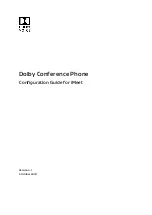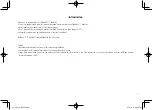
right page (53)
of CF75 FCC us-en, (06.06.2005, 11:15)
© Sieme
n
s
A
G
200
3,
C:
\S
iemen
s\
D
TP-S
atz\
Pro
dukte
\CF75
_
Ad
on
is_1\
Out
put
\C
F
75_FCC_us-en
_050
606_
te\
S
TD_FCC_Drivin
g_Tips.
fm
53
Ten Driving Safety Tips
VA
R
Langu
age:
am;
V
A
R issue dat
e:
0505
24
Ten Driving Safety Tips
Your Siemens wireless phone gives you
the power to communicate by voice – al-
most anywhere, anytime. But an impor-
tant responsibility accompanies the bene-
fits of wireless phones, one that every
user must uphold.
When driving a car, driving is your first re-
sponsibility. When using your wireless
phone behind the wheel of a car, practice
good common sense and remember the
following tips:
Get to know your phone and its features such
as speed dial and redial.
Carefully read your instruction manual
and learn to take advantage of valuable
features most phones offer including, au-
tomatic redial and memory dial – most
phones can store up to 99 numbers in
memory dial. Also, work to memorize the
phone keypad so you can use the speed
dial function without taking your atten-
tion off the road.
When available, use a hands-free device.
A number of hands-free wireless phone
accessories are readily available today.
Whether you choose an installed mount-
ed device for your phone or a speaker
phone accessory, take advantage of these
devices if they are available to you.
Position your phone within easy reach.
Make sure you place your wireless phone
within easy reach and where you can
grab it without removing your eyes from
the road. If you get an incoming call at an
inconvenient time, let your voicemail an-
swer it for you.
Suspend conversations during hazardous driv-
ing conditions or situations.
Let the person you are speaking to know
you are driving; if necessary, suspend the
call in heavy traffic or hazardous weather
conditions. Rain, sleet, snow and ice can
be hazardous, but so is heavy traffic. As a
driver, your first responsibility is to pay at-
tention to the road.
Do not take notes or look up phone numbers
while driving.
If you are reading an address book or
business card while driving a car, or writ-
ing a “to do” list, then you are not watch-
ing where you are going. It’s common
sense. Don’t get caught in a dangerous
situation because you are reading or writ-
ing and not paying attention to the road
or nearby vehicles.
Dial sensibly and assess the traffic.
If possible, place calls when you are not
moving or before pulling into traffic. Try to
plan your calls before you begin your trip,
or attempt to coincide your calls with
times you may be stopped at a stop sign,
red light or otherwise stationary. But if you
need to dial while driving, follow this sim-
ple tip – dial only a few numbers, check
the road and your mirrors, then continue.
Do not engage in stressful or emotional conver-
sations that may be distracting.
Stressful or emotional conversations and
driving do not mix – they are distracting
and even dangerous when you are be-
hind the wheel. Make people you are talk-
ing with aware you are driving and if nec-
essary, suspend phone conversations that
have the potential to divert your attention
from the road.
Use your phone to call for help.
Your wireless phone is one of the greatest
tools you can own to protect yourself and
your family in dangerous situations –
with your phone at your side, help is only
three numbers away. Dial 9-1-1 in the
case of fire, traffic accident, road hazard,
or medical emergency. Remember, it is a
free call on your wireless phone.












































